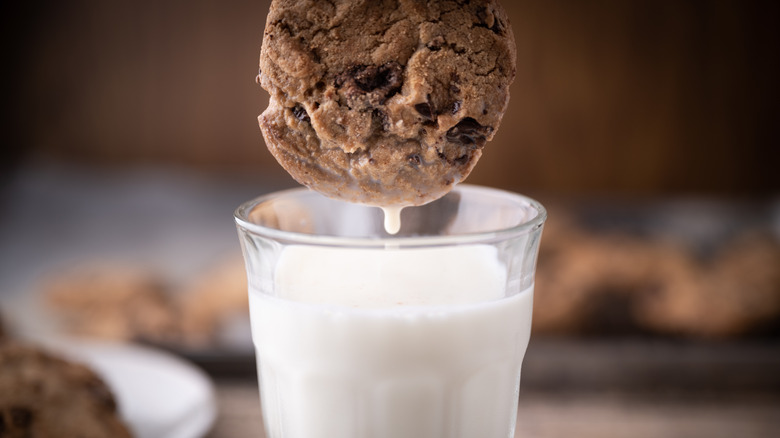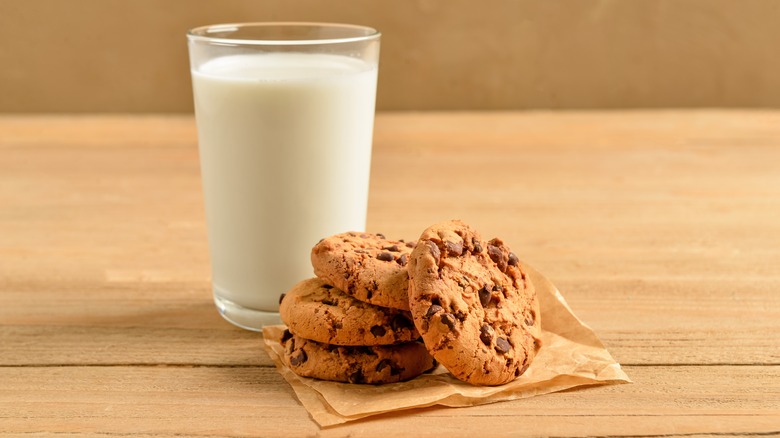The Scientific Reason Milk And Cookies Are Such A Good Pairing
It doesn't take a scientist to understand that the duo of milk and cookies is one of the most comforting, delicious, and treasured combinations known. It does, however, take a scientist to break down the concrete facts behind the success of this pairing — because there are, as it turns out, explanations as to why milk and cookies do team up so well together that go beyond "it tastes good." So, what do we know about the science of milk and cookies, especially classic chocolate chip cookies? For starters, both chocolate and milk contain phospholipids, which act as emulsifiers.
Emulsifiers blend and distribute fats and non-fats, like chocolate's cocoa butter and sugar. The phospholipids in both work together when you dunk a chocolate chip cookie in milk. The milk's emulsifiers actually smooth the chocolate's components as you take a bite and chew, so you get a full, rich, sweet flavor and texture faster than you would without the milk. Milk also coats your tongue, spreading out the bite itself and also forming a bit of a barrier between your tastebuds and the cookie, which makes its sweetness less intense and more palatable. The smooth, more neutral coating of the milk cuts any potentially cloying, sugary notes, and keeps you coming back for more perfectly balanced cookie bites.
Milk enhances and distributes flavors and aromas
In addition to milk's emulsifiers and its creamy, tongue-coating capabilities, its fat could fall under the category of what scientists have named oleogustus. According to a 2015 study published in Chemical Senses, this perception of fattiness might be the sixth basic taste, joining sweet, sour, bitter, salty, and umami. Oleogustus is thought to enhance the flavors of sweets like cookies, its fatty richness and subtle tang both bolstering and tempering saccharine characteristics. Finally, milk can also quite simply act as a speedy flavor transmitter. As it wets the cookie, the cookie's aromas are more readily available for your nasal passages to pick up on and process as sweet, bitter, chocolatey, vanilla-forward, and so on.
If the milk is warm, this will happen even faster still, because aromas travel more quickly at higher temperatures. The same line of reasoning applies to nearly any dessert you can think of, too. Where there are elements of sweetness and different flavor profiles to balance, enhance, and bring to your nasal passage faster, milk is there to emulsify, coat, enhance with fattiness, and amplify with wetness. The next time you crave some milk and dessert, really pay attention to what the milk brings to the table. Try it with traditional snickerdoodles, with sweetness and spicy cinnamon to be enhanced, or super fudgy brownies, with lots of gooey chocolate to be both emulsified and balanced.

